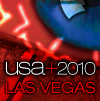Researcher Exposes Massive Automated Check Counterfeiting Operation Out of Russia
'Big Boss' operation used VPN-tunneling botnet, Zeus Trojan, database-hacking, and money mules to help print and cash phony checks
July 28, 2010

BLACK HAT USA -- Las Vegas -- A researcher has blown wide open a sophisticated online check-counterfeiting operation out of Russia that used a combination of a VPN'ed botnet, Zeus, and Gozi Trojans, SQL injection attacks, and money mules to print around $9 million worth of counterfeited U.S. checks in the past year.
The so-called "Big Boss" operation was uncovered during the past three months by Joe Stewart, director of malware research for the counter threat unit at Secureworks, who came across a new variant of the Zeus Trojan while dissecting another bit of malware. He then traced Zeus malware to a botnet, which he infiltrated, discovering that the traffic it was supporting was a counterfeiting checking operation.
"I've never seen this before. Check counterfeiting has always been an offline crime," Stewart says. Law enforcement has been alerted, and the operation remains under way as of now, he says.
In the end, Stewart found that the Russian-backed operation had printed and mailed out -- but not necessarily cashed in -- some $9 million in counterfeit checks from 1,280 bank accounts (mostly businesses and one U.S. government entity). The 3,285 checks that were mailed out tallied $65,000 in fraud against an overnight shipping firm. Some 2,884 job-seekers on online job sites responded to email messages from the counterfeit operation that posed as employers, using fake names, like Global Business Payments Ltd., in order to appear legitimate. They lured the money mules by offering them jobs such as that of a check-processing manager.
Stewart says the botnet used some sophisticated and novel techniques, such as a VPN connection over the Windows Point-to-Point Tunneling Protocol. But the botnet itself wasn't as intriguing as the traffic it moved, that of the counterfeiting operation, he says.
The botnet, which contained thousands of bots, let Big Boss operate anonymously and offer spam job offers to potential money mules, scrape job websites to gather new money mule prospects, and scrape the databases for scanned, processed checks.
The attackers also waged SQL injection attacks on some databases storing processed and imaged checks.
"They were amassing huge databases of processed checks. What they need to keep their operation large-scale is a fresh supply of account numbers, routing numbers, so they were getting a constant stream of new ones," Stewart says. They were able to hack into databases of so-called "lockbox" services that store dual copies of scanned check images for small banks and check-cashing services. "They either hacked them or stole account credentials" to them, Stewart says.
They then used off-the-shelf check-printing software. "There was no fancy counterfeiting press, all just off-the-shelf software. They put in the payments, formats, bank logo, and it was a go," he says. Stewart was able to view tens of thousands of these phony checks, all of which were under $3,000 so they could be quickly cashed since any checks more than $3,000 are subject to being held for additional time before banks will cash them.
"And individually [victim companies] weren't losing very much money. Each check was less than $3,000. The most that any business was losing was $9,000," he says.
The phony checks were shipped or mailed overnight to the money mules, who would cash the checks. They also were later told to wire the money to Russia, for instance. Stewart met several of the money mules, most of whom said they had no clue the operation was not legitimate.
Stewart says Big Boss is an organized criminal operation, but may only consist of two people or so. "They not only have the technical knowledge of the ins and outs of hacking -- SQL injection, credential theft, anonymization of VPNs and proxies -- but they also have the knowledge of archaic check systems and how they interface with storage sites. They know where those databases of information are," he says.
The reason the scam was so effective, he says, is that the checks were made from the same type of paper and ink that businesses use. "They devised this system to automate as much as possible to send out spam, recruit new mules, put out fake job ads, and mail these checks out overnight. They go to the proxy botnet in order to shipping labels, and pay with stolen credit cards ... The only human is someone that has to run the mule network," he says.
Have a comment on this story? Please click "Discuss" below. If you'd like to contact Dark Reading's editors directly, send us a message.
About the Author(s)
You May Also Like
Beyond Spam Filters and Firewalls: Preventing Business Email Compromises in the Modern Enterprise
April 30, 2024Key Findings from the State of AppSec Report 2024
May 7, 2024Is AI Identifying Threats to Your Network?
May 14, 2024Where and Why Threat Intelligence Makes Sense for Your Enterprise Security Strategy
May 15, 2024Safeguarding Political Campaigns: Defending Against Mass Phishing Attacks
May 16, 2024
Black Hat USA - August 3-8 - Learn More
August 3, 2024Cybersecurity's Hottest New Technologies: What You Need To Know
March 21, 2024



